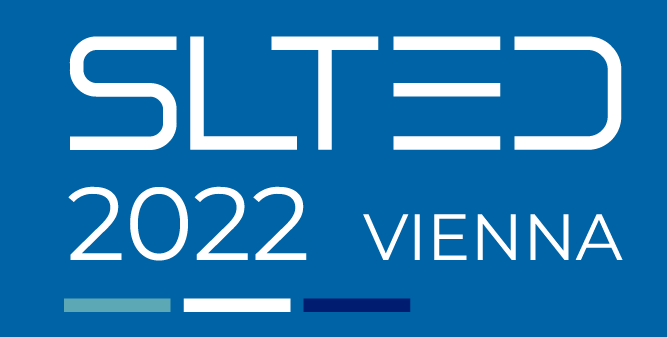Poster & Presentation Guidelines
General information
- There are computers with internet access in all rooms.
- Please bring your presentation on a memory key / USB stick and send it to your webmail account.
- Posters: please hang up your poster between 9-14.00 on Thursday. They will remain on display throughout the conference.
Poster
Poster summarising research in SLTED or an example of good SLTED practice. At a dedicated poster session during the conference, participants will be invited to ask questions or discuss your work with you. Posters will also be displayed in communal areas throughout the conference and included in the book of abstracts. There will be a prize (people’s choice) for the best poster (criteria: content, organization & logical arrangement, focus, design).
Based on the poster stands available, there is a choice of two formats:
- Truncated A0 landscape (max. 99 cm wide and 84 cm high)
- A0 portrait (84 cm wide and 119 cm high)
Brief dos and don'ts:
- The text should be clear and to the point, and the word count should not exceed 800 words.
- Use a font size of at least 48 pt. for headings and at least 24 pt. for the body text, as well as effective bullet points/numbering and visuals to improve readability.
- Do not include your abstract on the poster.
- Add a QR code with your email address/link to your website.
- Posters can be created in power point or in canva (www.canva.com), etc., and templates can easily be found online.
Either of the following websites has more detailed useful advice:
- Erren, Thomas. C; Bourne, Philip E. 2007. “Ten simple rules for a good poster presentation”. PLoS Comput Biol. Bethesda, MD: National Library of Medicine, doi: 10.1371/journal.pcbi.0030102
- Purrington, Colin. 2019. “Designing conference posters”. A blog with nature photography, biology related projects, & geeky tips. https://colinpurrington.com/tips/poster-design/ (21 July 2022).
Presentation
‘Traditional’ oral presentation of research in SLTED, preferably with clear links to the practice of teacher education, supported by Powerpoint or other visual media. Duration: 15-minute talk plus 10-minute discussion.
In relation to our equipment/screens and good etiquette, please consider the following points when finalising your presentation:
- Consider using the slide master feature to design your own templates, e.g. bulleted list, two-column text, text and image, etc., and create your own distinctive look.
- For good readability for all participants, please use a dark text (sans serif font, 24-36 point) on a light background (e.g. pale blue rather than white).
- Limit the number of words on each screen, e.g. heading (36-48 point) + max. 6 lines with 6-8 words per line (except for quotations).
- Use high-resolution images and create tables and figures which people in the back row can also read.
- Give a brief overview at the start, then present the information and finally review the important points.
- Do not use your slides as notes for your presentation (and do not read out your slides) but rather use its potential for visualising, highlighting, or summarizing your key points.
- Practise your presentation so that you know it fits within the given time slot.
- Save your presentation on a USB stick, a cloud service or send it to yourself via email so that you can access it easily.
Finally, to quote Joseph Sommerville, “[a] verbal presentation should focus on interactive speaking and listening, not reading by the speaker or the audience. The demands of spoken and written language differ significantly. Spoken language is shorter, less formal and more direct. […] Often, parts of an effective presentation depend on creating suspense to engage the audience. If the audience can read everything you’re going to say, that element is lost”.
For a longer list of dos and don’ts on fonts, design and graphical images, colour and general presentation, see:
Scientific Advisory Board
- Tanja Angelovska
- Tatjana Bacovsky
- Silvia Bauer-Marschallinger
- Linda Bäumler
- Lisa Bierbaumer
- Christiane Dalton-Puffer
- Werner Delanoy
- Benjamin Fliri
- Erwin Gierlinger
- Julia Hargaßner
- Helen Heaney
- Elisabeth Heiszenberger
- Julia Hüttner
- Barbara Mehlmauer-Larcher
- Julia Pittenauer
- Elisabeth Pölzleitner
- Matthias Prikoszovits
- Elissa Pustka
- Angelika Rieder-Bünemann
- Michaela Rückl
- Karen Schramm
- Alexandra Schurz
- Manuela Wipperfürth
Submission Software
The Conference and Event Management service unit processes the submission data by means of a software by the company UNGERBOECK SYSTEMS INTERNATIONAL GMBH, Kaiserstraße 72, 76133 Karlsruhe, Germany (processing agreement according to article 28 of the GDPR).
